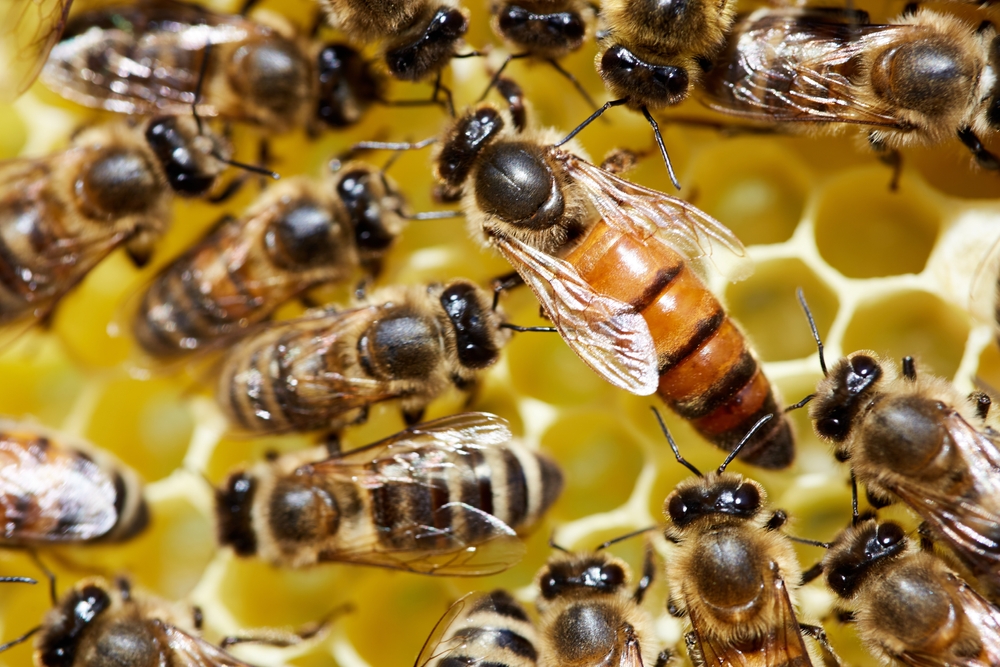Cancer treatment has long relied on aggressive therapies like chemotherapy and radiation, but these methods often come with severe side effects. As a result, scientists are increasingly turning to alternative, more targeted approaches to fight the disease. One such breakthrough comes from honeybee venom, which has shown the potential to destroy aggressive breast cancer cells in laboratory settings. This discovery, which centers around a compound called melittin, offers hope for a more precise treatment option, particularly for hard-to-treat forms of breast cancer such as triple-negative and HER2-enriched breast cancers.
The potential of honeybee venom to target cancer cells specifically, while leaving healthy tissue largely unharmed, represents a promising shift in cancer therapy. Researchers have found that melittin can disrupt key signaling pathways that allow cancer cells to grow and replicate, making it a powerful weapon against certain types of breast cancer. Although the discovery is still in the early stages, the results have sparked excitement within the scientific community, suggesting that natural compounds li

Melittin’s Mechanism: How It Targets Cancer Cells
At the heart of the honeybee venom’s potential lies melittin, a powerful compound that plays a crucial role in how the venom affects cancer cells. Melittin is a peptide that, when introduced into cancer cells, disrupts their cellular functions in a way that prevents growth and reproduction. In the study conducted by Dr. Ciara Duffy and her team, melittin was found to be particularly effective at interfering with the signaling pathways that cancer cells rely on for survival. These signaling pathways are responsible for regulating key processes, such as cell division and growth. By disrupting these signals, melittin essentially “shuts down” the cancer cell’s ability to replicate, leading to its death.
What makes melittin particularly intriguing as a potential cancer treatment is its ability to target cancer cells selectively. While it can kill cancer cells effectively, it shows minimal toxicity to healthy cells when used in lower concentrations. This selective targeting is essential in cancer therapy because one of the major side effects of traditional treatments like chemotherapy is the collateral damage to healthy cells. With melittin, the goal would be to harness its ability to attack cancer cells while minimizing harm to surrounding healthy tissue, which could make it a more precise and less harmful treatment option.
Another aspect of melittin’s effectiveness is its ability to disrupt the cell membrane of cancer cells. It works by inserting itself into the lipid bilayer of the cancer cell’s membrane, creating pores that lead to cell membrane instability. This damage results in the release of contents within the cell that are critical to its survival, triggering cell death. Melittin’s action on the cell membrane is what gives it the ability to break down cancer cells so rapidly. In lab tests, melittin has shown the ability to kill cancer cells in a matter of hours, which is a stark contrast to the slower, less targeted mechanisms of traditional cancer therapies.
The discovery that melittin can be synthetically produced adds another layer of promise to its potential use in clinical settings. While naturally occurring melittin is derived from honeybee venom, scientists are now exploring ways to produce it in controlled environments, making it more accessible for therapeutic use. This synthetic production also means that scientists can adjust and optimize the compound to achieve the best results, improving its potency and reducing potential side effects.
Despite its promising action, experts caution that melittin’s use as a cancer treatment is still in its early stages. Further research is required to determine the optimal dosage, delivery methods, and potential side effects before it can be considered for widespread clinical use. However, its ability to target cancer cells while sparing healthy tissue positions melittin as a highly innovative candidate for the future of cancer treatment

Challenges and Limitations of Using Bee Venom in Cancer Treatment
While the discovery of honeybee venom’s potential to target and kill cancer cells is promising, several significant challenges must be addressed before it can be considered a viable treatment option for human patients. One of the primary hurdles is the question of dosage. In laboratory settings, honeybee venom has shown varying levels of toxicity depending on the concentration used. At higher concentrations, the venom’s toxicity increases, potentially damaging healthy cells alongside cancerous ones. Finding the right balance—an effective dose that kills cancer cells without harming surrounding tissue—is critical for the venom to be safely used in medical treatments. Additionally, the compound melittin itself may need to be fine-tuned to optimize its effectiveness and minimize any adverse effects.
Another challenge lies in the delivery method. Bee venom is a complex mixture of compounds, with melittin being just one active component. To use venom therapeutically, researchers would need to determine how to safely and effectively deliver it to the body. The venom is typically administered through a sting, but such an approach would obviously be impractical and potentially harmful in a clinical setting. Therefore, researchers are exploring alternatives, such as synthetic versions of melittin or encapsulating it in nanoparticles to ensure that it reaches cancer cells directly without affecting healthy cells. The technology for such precise delivery is still being developed, and it will require substantial refinement to make it both effective and safe for patients.
Moreover, while the venom has shown promise in lab studies, translating these findings into real-world treatments is a long process. Laboratory results often don’t replicate the same success when tested in humans due to differences in metabolism, immune responses, and cancer cell behavior in live organisms. Even compounds that perform well in vitro—meaning in controlled lab environments—can fail to have the same impact in clinical trials. As noted by experts, such as Associate Professor Alex Swarbrick, while many compounds can kill cancer cells in a petri dish, “there’s a long way to go from those discoveries to something that can change clinical practice.” This means that even though honeybee venom shows early potential, it will take years of testing, refinement, and clinical trials to determine whether it can actually become part of cancer treatment regimens.
The regulatory landscape also presents another challenge. The approval process for new cancer therapies is rigorous, requiring extensive trials to assess not only the treatment’s effectiveness but also its long-term safety. This can be a time-consuming and expensive process. Researchers will need to navigate these hurdles before honeybee venom can be considered a legitimate alternative to current cancer treatments.

Honeybee Venom and Its Potential in Cancer Treatment
Recent research from Australian scientists has uncovered a surprising and potentially groundbreaking method for fighting cancer: honeybee venom. In a study published in Nature Precision Oncology, scientists discovered that venom from honeybees, specifically a compound called melittin, could effectively target and kill aggressive breast cancer cells in lab environments. The study focused on two difficult-to-treat types of breast cancer: triple-negative breast cancer (TNBC) and HER2-enriched breast cancer, both of which are known for their resistance to traditional treatments. This finding is particularly significant because TNBC, which accounts for 10-15% of all breast cancer cases, is notoriously difficult to treat with standard therapies such as chemotherapy, surgery, and radiotherapy.
The research, conducted at the Harry Perkins Institute of Medical Research in Western Australia, involved venom from more than 300 honeybees and bumblebees. Dr. Ciara Duffy, a 25-year-old PhD researcher and the study’s lead investigator, found that honeybee venom was “extremely potent” in its ability to kill cancer cells. In fact, one of the venom concentrations tested was able to destroy cancer cells within just an hour, with minimal damage to healthy cells. However, it was also noted that higher venom concentrations led to increased toxicity, which suggests that while bee venom holds promise, finding the right dosage will be crucial in determining its viability as a treatment.
The compound melittin, which naturally occurs in honeybee venom, was also shown to disrupt cancer cell growth by interfering with critical signaling pathways within the cells. These pathways are essential for cancer cell replication and survival, and melittin’s ability to target and shut them down could provide a new, highly targeted method for treating aggressive breast cancer. Furthermore, melittin can be synthetically produced, which could make it a more accessible option for future treatment, especially if further studies confirm its effectiveness in clinical settings.
While the results of this research are certainly exciting, experts caution that this discovery is still in its early stages. As Dr. Ciara Duffy herself pointed out, the venom’s ability to kill cancer cells in a lab is one thing, but translating these results into a treatment for humans is a much more complex challenge. As Associate Professor Alex Swarbrick from the Garvan Institute of Medical Research in Sydney noted, “Many compounds can kill a breast cancer cell in a dish or in a mouse. But there’s a long way to go from those discoveries to something that can change clinical practice.” This caution highlights the reality of medical research: despite promising laboratory results, it can take years of further testing and development to determine whether these findings will translate into real-world treatments. However, the potential of using natural compounds like honeybee venom to combat cancer is an exciting area of research, opening the door to new, alternative therapies in the future.

Current Outlook and Future Prospects for Honeybee Venom in Cancer Treatment
The future of honeybee venom in cancer treatment holds substantial promise, but it is important to recognize that this is a relatively new area of research, and much remains to be done before it can be applied clinically. The findings from the Australian study have ignited interest and excitement, but as researchers continue to explore this potential treatment, there are several factors that will determine whether bee venom can make a significant impact in the fight against cancer.
First, while laboratory studies have demonstrated melittin’s ability to target and kill cancer cells, translating these results into successful human therapies requires more rigorous testing. Clinical trials will need to assess not only the venom’s effectiveness against various forms of cancer but also its safety in humans. This includes determining appropriate dosage levels, identifying any potential side effects, and developing effective delivery methods. The synthetic production of melittin is an encouraging development, as it allows for more controlled experimentation and the possibility of more efficient treatment options. However, this synthetic process will need to be refined further to ensure that melittin retains its cancer-fighting properties without introducing new risks.
Another factor that could influence the success of honeybee venom as a treatment is the ability to integrate it with existing therapies. Cancer treatment is rarely a one-size-fits-all approach, and combining venom-based therapies with traditional methods like chemotherapy, radiation, or immunotherapy could enhance their effectiveness. For instance, melittin could potentially be used as a supplementary treatment to target specific cancer cells while other therapies work on a broader scale. Combining multiple treatments in this way is a common strategy in cancer care, and if melittin can be proven to work alongside existing therapies, it could provide a powerful new tool in the oncologist’s arsenal.
Looking further ahead, it’s also worth considering how this discovery could open doors to other natural compounds with anti-cancer properties. The success of honeybee venom could inspire researchers to investigate other animal venoms or plant-based substances that may also offer therapeutic potential. This shift towards exploring nature-derived treatments reflects a broader trend in the scientific community, where there is growing recognition of the value of natural compounds in drug discovery. It is possible that honeybee venom is just the beginning, with even more groundbreaking discoveries to come in the years ahead.
Key Takeaways and What This Means for the Future of Cancer Treatment
The discovery of honeybee venom’s potential to fight breast cancer marks a significant step forward in cancer research. While much of the work is still in the early stages, this breakthrough highlights a few important themes that could shape the future of cancer treatment.
First, the study underscores the growing role of nature-derived compounds in medical research. For years, scientists have turned to natural substances for their healing properties, and honeybee venom adds to a long list of compounds that may hold untapped potential for combating diseases like cancer. The fact that melittin—an active compound in the venom—has shown the ability to disrupt cancer cell growth without harming surrounding healthy tissue is a crucial finding. This kind of targeted therapy could, in theory, lead to cancer treatments with fewer side effects compared to traditional methods like chemotherapy and radiation.
However, it is important to acknowledge that, as with any early-stage research, significant work remains before honeybee venom can be developed into a widely accepted cancer therapy. The challenges of dosage, delivery methods, and long-term safety will need to be addressed. Clinical trials will be necessary to determine how well melittin works in the human body, and whether it can be safely integrated into existing cancer treatments. As researchers continue to refine their approach, there is hope that honeybee venom could one day play a role in treating some of the most aggressive and difficult-to-treat cancers, such as triple-negative breast cancer.
For now, the key takeaway is that this research provides a hopeful glimpse into the future of cancer treatment. While it’s clear that more testing and development are required, the discovery represents a shift toward more personalized, targeted therapies in cancer care. As the scientific community delves deeper into the potential of natural compounds like honeybee venom, we may see a future where such therapies complement traditional cancer treatments, offering patients new and potentially more effective options.
In the meantime, researchers, healthcare professionals, and the public must remain patient and cautious, as the road from laboratory findings to clinical application is long and filled with challenges. Nonetheless, this study serves as a reminder that innovative, unconventional solutions could hold the key to solving some of cancer’s toughest challenges, and it highlights the power of curiosity and scientific exploration in pushing the boundaries of what’s possible in medicine.















Leave a Reply